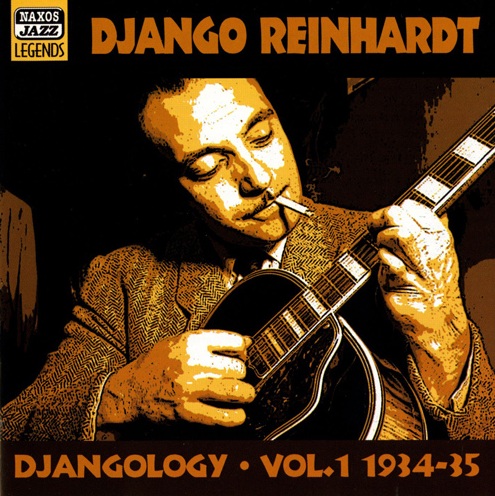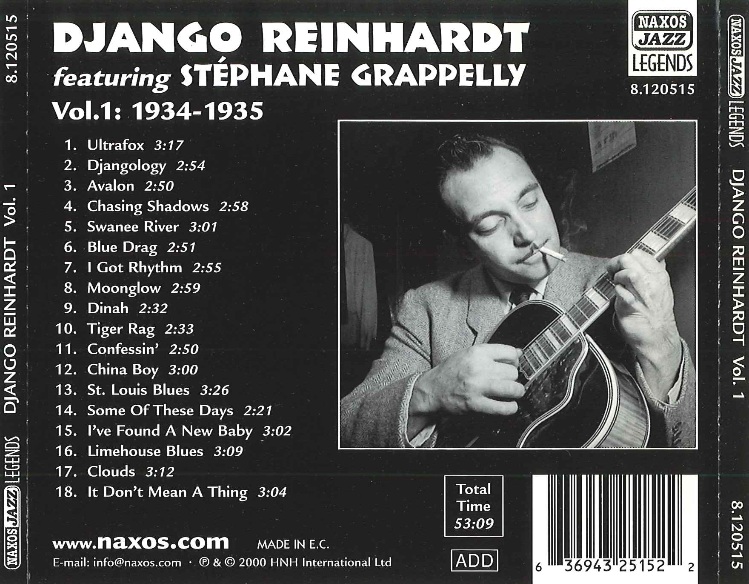Logowanie
Mikołaj - ten to ma gest!
Elton John, The Mamas & The Papas, Cat Stevens, Rod Stewart, Bobbie Gentry, Stevie Wonder, Engelbert Humperdinck
Memory Lane
Edycja Numerowana - 1000 egzemplarzy w skali światowej
RACHMANINOV, Eiji Oue, Minnesota Orchestra
Symphonic Dances / Vocalise
Best Recordings of 2001!!! NAJCZĘŚCIEJ KUPOWANA PŁYTA Z RR!
Karnawał czas zacząć!
Music of Love - Hi-Fi Latin Rhythms
Samba : Music of Celebration
AUDIOPHILE 24BIT RECORDING AND MASTERING
CHOPIN, LISZT, DEBUSSY, DVORAK, Gerhard Oppitz
Dances romantiques - A fantastic Notturno
Wzorcowa jakość audiofilska z Clearaudio
Winylowy niezbędnik
ClearAudio
Double Matrix Professional - Sonic
najbardziej inteligentna i skuteczna pralka do płyt winylowych wszelkiego typu - całkowicie automatyczna
Django Reinhardt
Djangology - Vol.1 1934-35

- Django Reinhardt - guitar
"C. Michael Bailey All About Jazz, February 2003 "Both collections are welcome, for the price and the music documented. I hope that Naxos has access to much more." D. Oscar Groomes O’s Place Jazz Magazine, November 2001 "Django on guitar and Stephane Grappelli (violin) were masterful in their era and are easily appreciated as legends today. These eighteen songs feature the pair in several different settings recorded in Paris in 1934-35. "Avalon", "I Got Rhythm" and "Tiger Ray" are among the highlights." "A unique interplay of instruments, a sweet blending of violin and guitar and a buoyantly optimistic incisiveness of rhythm made the Quintet of the Hot Club de France a special jazz niche whose appeal seems never to have diminished. Contrasts in the attitudes of the main protagonists: the wild, volatile, extravagant, semi-illiterate unpredictability of "star turn" Django counterbalancing the urbane, smartly ambitious, refined yet accessible Grappelli. Their ongoing love-hate relationship - as complementary as yin and yang - must account in some measure for the undying magic, but a mutual striving towards musical excellence and the self-confidence born of hard-earned technical proficiency also audibly played their part. Django was born Jean-Baptiste Reinhardt at liberchies, near Charleroi, in Belgium, on 23rd January, 1910. His father was an itinerant gypsy violinist and entertainer, his mother a well known gypsy dancer. Based at a gypsy encampment on the outskirts of Paris, his family formed part of a troupe of comedians whose constant travelling made his youth a nomadic and unstable existence largely spent in caravans. Musically speaking entirely self-taught and self-motivated, already by his teens he was well versed in the latest trends and his prodigious multi-instrumental talent (violin, banjo and guitar) was recognised within the cabarets, guinguettes and cafés of Paris and its environs. His unique style was a poetical synthesis of imported American jazz and traditional gypsy rhythms. Following a period of convalescence from a caravan fire in 1928 (an injury sustained to his left hand constrained him thereafter to devise a special playing technique to overcome the loss of use of two fingers), he worked during the pre-Hot Club years principally as an accompanist to various singers, notably the cabaret vocalist Jean Sablon. His first encounter with Grappelli was with André Ekyan's band at the Parisian Croix de Sud Club, in 1933. Born in Paris on 26th January, 1908, the son of an aspiring dancer and failed business entrepreneur, Stéphane Grappelly's youth was partly spent in a Parisian orphanage. He first trained at the Isadora Duncan dance school but, stirred by classical music as a child, took a serious interest in the violin - solfeggio lessons with his father followed by violin and piano classes at the Paris Conservatoire. By the late 1920s, like Django, he had fallen under the influence of American jazz, specifically of the violinist Joe Venuti. In imitation of his hero, during the Depression years he at first eked a living playing violin in Parisian cafés and piano in cinemas and casinos. During the early 1930s, Grappelly was already starting to move in the right jazz circles. By 1933, both he and Django were working at Claridges. From this plush socialite niche, which featured Sablon, Trénet and other up-and-coming international stars of French cabaret, the Quintette du Hot Club de France sprang into being, as it were by coincidence, in 1934. Essentially innovative and European in its style (notwithstanding the American precedents of violinist Joe Venuti and guitarist Eddie Lang) -the Quintette du Hot Club de France soon became the world's unique purveyors of "le jazz hot". Prior to its formation Django had already worked in Paris alongside visiting American jazz men, including Benny Carter, Coleman Hawkins and Eddie South. The Hot Club recordings of 1934-1935 made Reinhardt -and later Grappelly - international household names. The earliest Hot Club recording sessions featured dextrous "hot" revivals of established standards and some key Tin Pan Alley contemporary hit-songs. The session of December 1934 included Original Dixieland Jazz Band Nick La Rocca's “Tiger Rag” (1917) and Harry Akst's “Dinah” (1925). Subsequent sessions produced (March 1935) Doc Dougherty and Ellis Reynolds' 1930 hit “Confessin'”; (April 1935) Myrow's “Blue Drag” (1933), Stephen Foster's “Swanee River” (1851) and the Reinhardt-Grappelly creation “Ultrafox” (1934); (July 1935) Al Jolson's “Avalon” (1920) and Walter Donaldson's “Clouds” (1933); (September 1935) Shelton Brooks' “Some Of These Days” (1910) and “Djangology” (1935), another Reinhardt-Grappelly collaboration. More accurately billed as by "Stephane Grappelly And His Hot Four", sessions of September and October 1935 included W. C. Handy's “St. Louis Blues” (1914), Phil Boutelje's “China Boy” (1922), Philip Braham's “Limehouse Blues” (1924), Gershwin's “I Got Rhythm” (1930), Clarence Williams' “I've Found A New Baby” (1932), Duke Ellington's “It Don't Mean A Thing” (“If It Ain't Got That Swing”) (1932) and Eddie De Lange's “Moonglow” (1934)." Peter Dempsey, 2000.





























